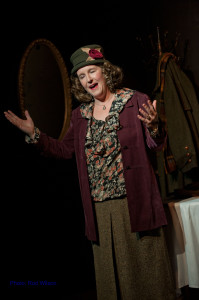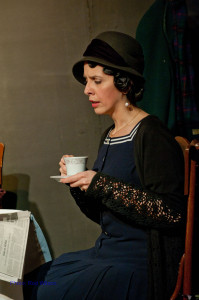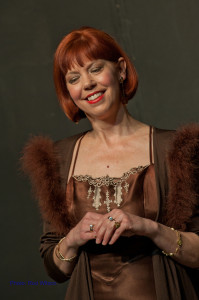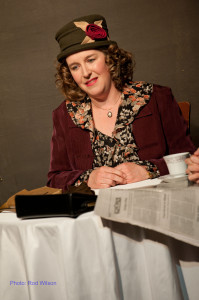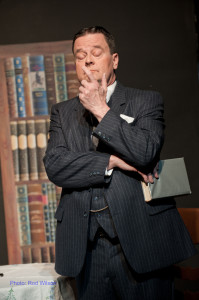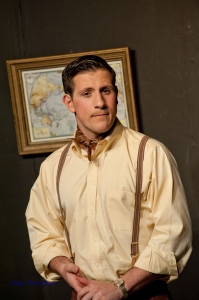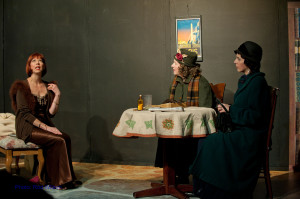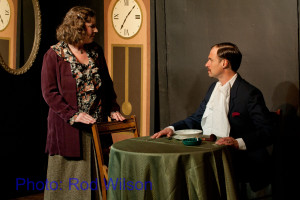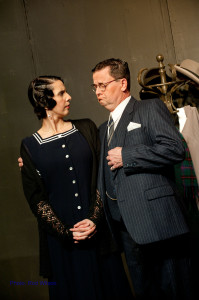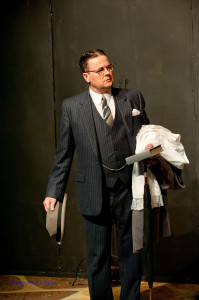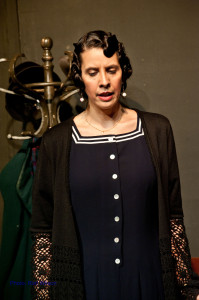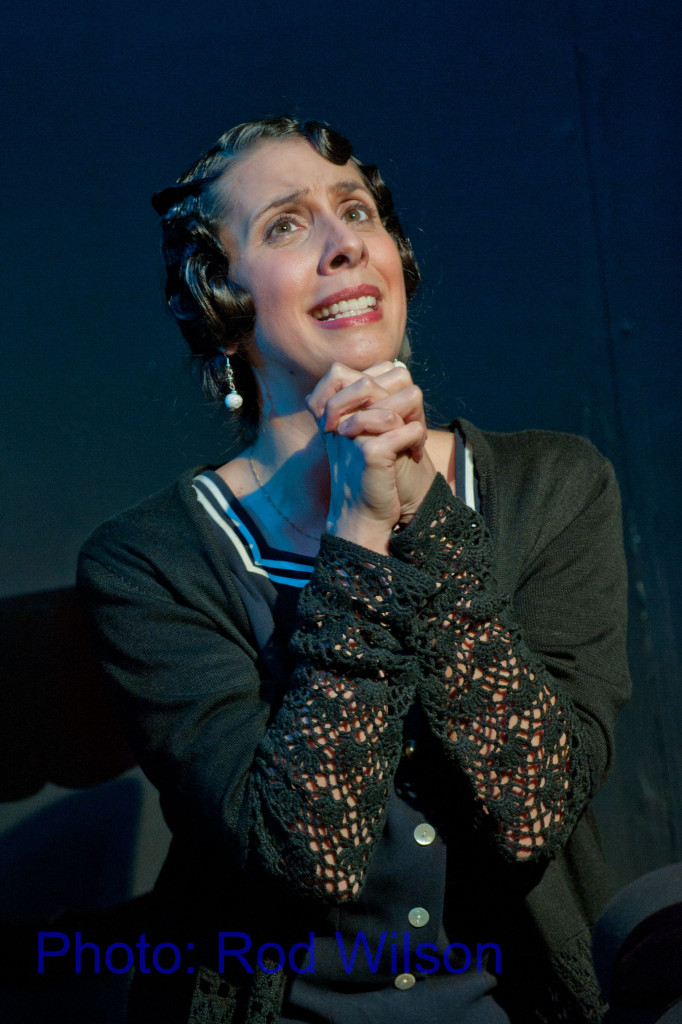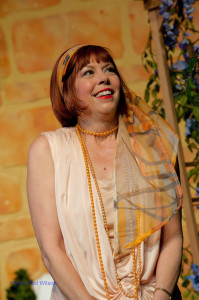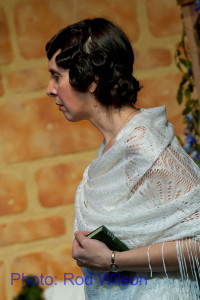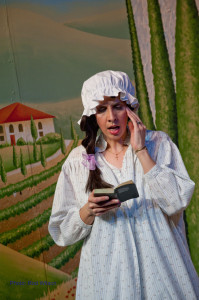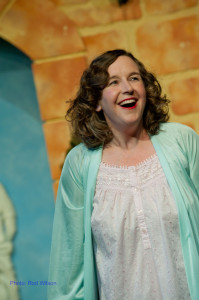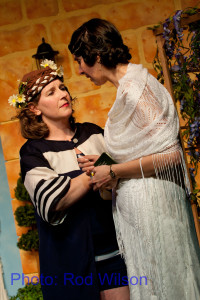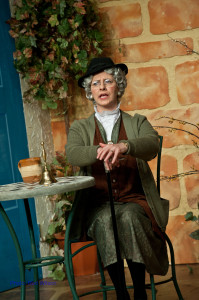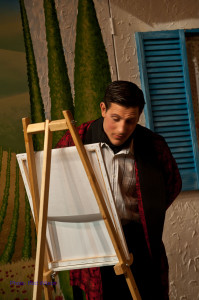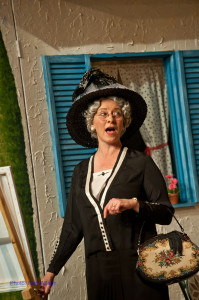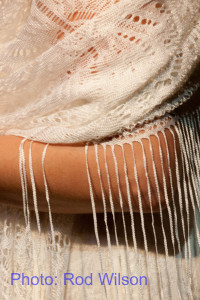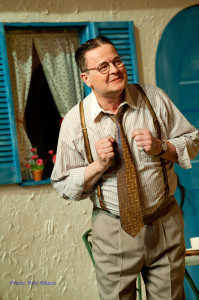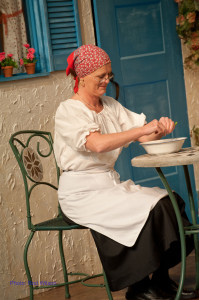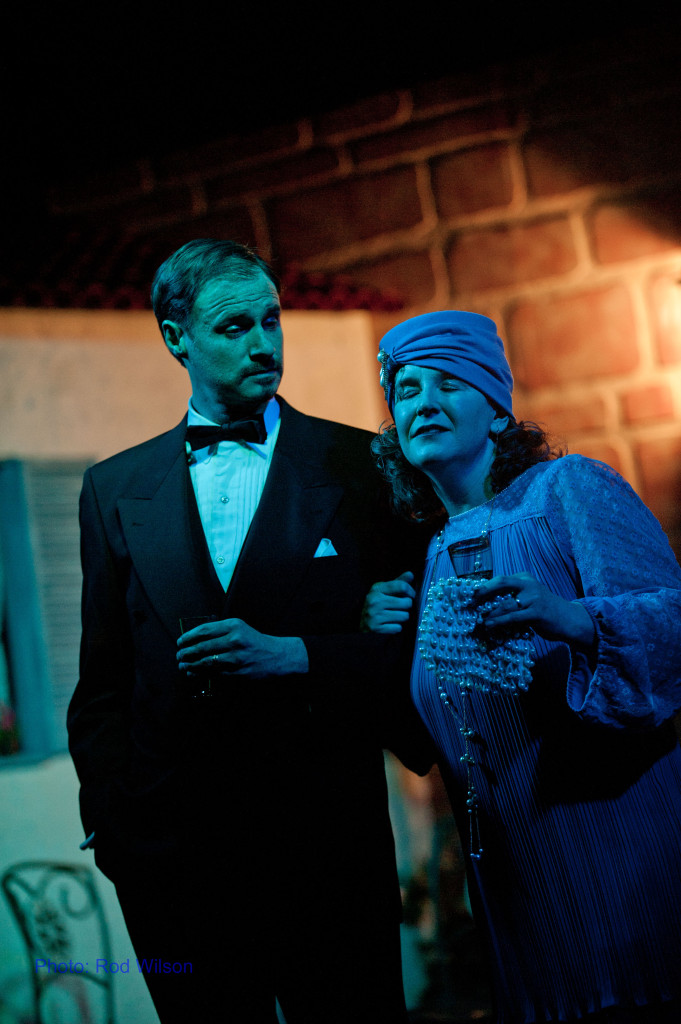 Enchanted April, full dress rehearsal at the Studio/Stage Door, Wednesday April 10, 2013, 8pm.
Enchanted April, full dress rehearsal at the Studio/Stage Door, Wednesday April 10, 2013, 8pm.
It’s a fairly common theme in life and in art. Women, mostly middle aged, become disillusioned with their hum drum life and husbands that no longer pay attention to them. They look for a way out, or at least some diversion to color their existence, and often this comes in the form of travel. To turn the old saying on it’s head “a holiday is as good as a change”. I suspect there is a whole sector of the travel industry that caters to these needs. In Australia the The Australian Woman’s Weekly, now a glossy monthly magazine with a circulation of over 500,000/issue, for years sponsored guided world tours for these jaded ladies. Any casual observation, and an ear for Aussie accents, will detect hundreds of these ladies getting off the tour buses in Jasper and Banff during the summer. In art, the play and the movie Shirley Valentine explored the jaded female theme. If you remember Shirley had resorted to talking to the wall until she packed her bags and headed off to Greece for a bit of sunshine and whatever to spice up her life. She leaves behind a well 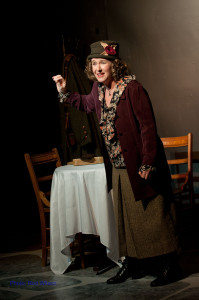 meaning, but unaware, husband who she hopes will get the message. The play Enchanted April revisits, with some variations, that same emotional territory. Lotty Wilton, played by Tracy Maguire, after a chance encounter with Rose Arnott, played by Jennifer Inglis, schemes to use her pin money to head off to Italy for some much needed R&R. To defray the cost of the castle they wish to rent they enlist the help of a very
meaning, but unaware, husband who she hopes will get the message. The play Enchanted April revisits, with some variations, that same emotional territory. Lotty Wilton, played by Tracy Maguire, after a chance encounter with Rose Arnott, played by Jennifer Inglis, schemes to use her pin money to head off to Italy for some much needed R&R. To defray the cost of the castle they wish to rent they enlist the help of a very 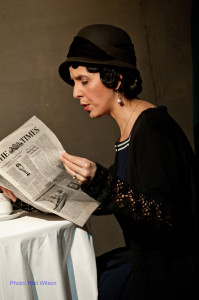 colorful but jaded socialite, Lady Caroline Bramble, played by Michelle Lemay, and an older lady, Mrs. Graves, played by Nicola Kaufman. The first half of the play revolves around their schemes, anxieties and apprehensions.
colorful but jaded socialite, Lady Caroline Bramble, played by Michelle Lemay, and an older lady, Mrs. Graves, played by Nicola Kaufman. The first half of the play revolves around their schemes, anxieties and apprehensions. 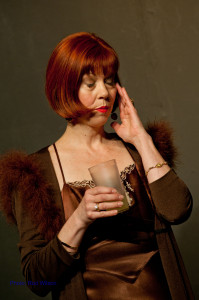 Lotty is all gungho while Rose is not so sure. Meanwhile the husbands Mellersh Wilton (Sean Swinwood) and Frederick Arnott (Peter Schalk) are mostly oblivious to the ongoing emotional dynamics. The play is set in the years immediately following World War I and the great ‘flu pandemic of 1919. There is sense of loss and aloneness that pervades the first half of the play. The director Terry Miller has done a great job of enhancing these emotions as well as invoking a dreary England with it’s never ending rain and dull interiors. He skillfully moves the first half of the play through nine scenes and eight
Lotty is all gungho while Rose is not so sure. Meanwhile the husbands Mellersh Wilton (Sean Swinwood) and Frederick Arnott (Peter Schalk) are mostly oblivious to the ongoing emotional dynamics. The play is set in the years immediately following World War I and the great ‘flu pandemic of 1919. There is sense of loss and aloneness that pervades the first half of the play. The director Terry Miller has done a great job of enhancing these emotions as well as invoking a dreary England with it’s never ending rain and dull interiors. He skillfully moves the first half of the play through nine scenes and eight 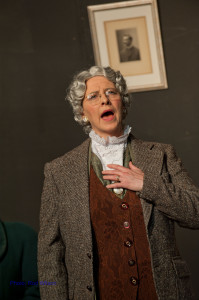 locations with only slight variations of a single set. All of that changes when the action moves to sunny Italy. I wish I hadn’t left the room for the intermission when they changed set. The contrast between dreary England and sunny Italy is astounding. I spent a good portion of the second half of the play trying to figure out how they changed the set so quickly and dramatically. The Italian sunshine, the castle, the
locations with only slight variations of a single set. All of that changes when the action moves to sunny Italy. I wish I hadn’t left the room for the intermission when they changed set. The contrast between dreary England and sunny Italy is astounding. I spent a good portion of the second half of the play trying to figure out how they changed the set so quickly and dramatically. The Italian sunshine, the castle, the 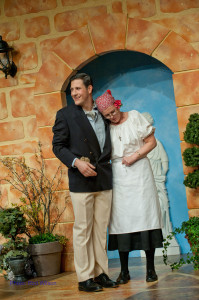 setting, the maid Constanza (Andrea Grossmand) and the owner Anthony Wilding (David Popoff) all work their magic on the ladies as they slowly undergo their respective transformations towards happy resolutions at the end of the play.
setting, the maid Constanza (Andrea Grossmand) and the owner Anthony Wilding (David Popoff) all work their magic on the ladies as they slowly undergo their respective transformations towards happy resolutions at the end of the play.
Even before the play started, while waiting for the curtain to rise (so to speak), the choice of music, prepared me for a wonderful evening. The choice of Dick Hyman, one of my very favorite piano players, created the appropriate atmosphere for the opening act. For those of us who notice these things Dick Hyman, although not a household name, is a favorite of Woody Allen and has often been featured on the sound tracks in many of his films. He is an incredibly skillful musician whose repertoire virtually run the whole gamut of jazz piano. Later, in keeping with the switch to sunny Italy, Dick Hyman took a rest and the music became decidedly Italian with a great selection from the Italian operas. Even the piano music, though not Italian (maybe Spanish), that Mellersh Wilton was “playing” off stage towards the end of the play was a delight.
Here are some more images from this delightful play – first dreary England
(click on the images for larger views).
@@@@@@@@@@@@@@@@@

